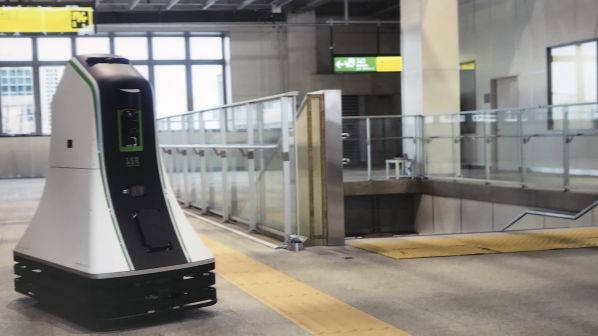The robot is designed to detect the movement of people using both its own sensor and a network of bollards installed at strategic locations in the station. The robot is also able to react if a person is running through the station and position itself away from crowds when a train arrives using information from sensors positioned above the platform.
The robot is tall enough for the camera to have a range of 100m, but also slimline so it is not too bulky or intimidating to passengers. The operating speed is limited to 3km/h to reduce the risk of collision. The robot can also issue audio alerts.
Mr Takeshi Sarto, researcher in the Frontier Service Development Laboratory at JR East, told IRJ that with an expected shortage of workers in the future, developing robots is part of the railway’s strategy to address this human resource shortfall.
The robot development programme began in 2017 and JR East has established a new subsidiary, JR East Robotics, which is applying robotic technology to the railway operating environment. The railway is also emphasising open innovation, working with start-up and specialist Japanese and international robotic companies to access the technology which it is unable to develop itself and applying this with its specialist knowledge of railway environments.
Trials
Trials of the system have taken place in a closed station test facility and at night when there are less people using the station. Sarto says the next phase of the project is to test the robot during the day at a station, which he anticipates happening in early 2020.
The railway is also showing a concept for gateless ticketing. The cost of a ticket is automatically debited from a passenger’s mobile phone using NFC technology as the passenger passes through the gate. The railway is still working on developing the technology, with no rollout or prototype installation date yet confirmed.

